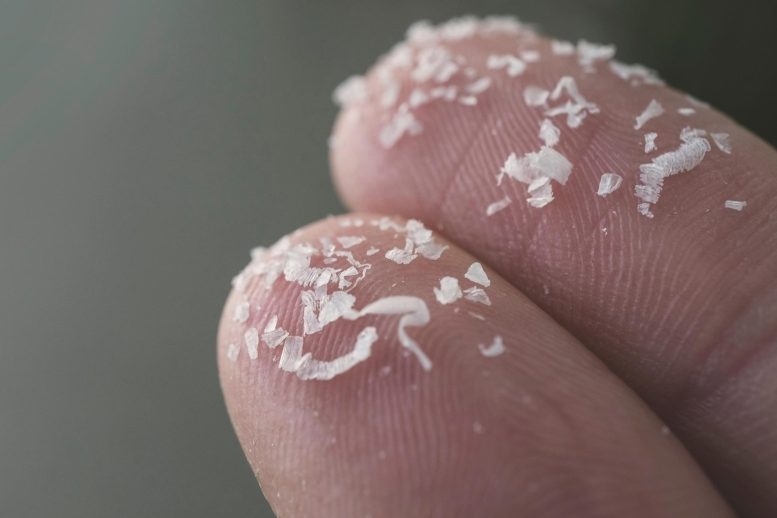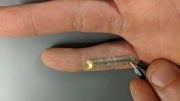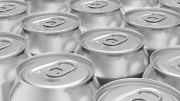
A study by the University of Portsmouth and the Flanders Marine Institute has found that a plant-based plastic material emits significantly fewer microplastics than traditional plastic when subjected to sunlight and seawater. The research highlights the resilience of bio-based plastics and emphasizes the need for further investigation into their environmental impact, particularly in marine settings. Despite the promising results, the release of any microplastics remains concerning, pointing to a continued need for innovation and stricter environmental policies.
Recent research shows that plant-based plastics release far fewer microplastics than traditional plastics in marine environments, suggesting they could be a more environmentally friendly option. However, continued research is crucial to fully assess their impact.
A recent study has discovered that a new plant-based plastic material releases nine times fewer microplastics compared to traditional plastic when subjected to sunlight and seawater. Conducted by researchers from the University of Portsmouth and the Flanders Marine Institute (VLIZ) in Belgium, the study examined the degradation of two different types of plastic under harsh conditions.
A bio-based plastic material made from natural feedstocks held up better when exposed to intense UV light and seawater for 76 days — the equivalent of 24 months of sun exposure in central Europe — than a conventional plastic made from petroleum derivatives.
Environmental Impacts of Bio-Based Plastics
Professor of Mechanical Engineering, Hom Dhakal, from the University’s School of Mechanical and Design Engineering, and a member of Revolution Plastics said: “Bio-based plastics are gaining interest as alternatives to conventional plastics, but little is known about their potential source of microplastics pollution in the marine environment.
“It’s important to understand how these materials behave when they’re exposed to extreme environments, so we can predict how they’ll work when they’re used in marine applications, like building a boat hull, and what impact they might have on ocean life.
“By knowing the effect of different types of plastics on the environment, we can make better choices to protect our oceans.”
According to the Plastic Oceans International Organization, the equivalent of a truckload of plastic is poured into the oceans every minute of the day. When this plastic waste is exposed to the environment, it breaks down into smaller particles that are less than 5 mm (0.2 inches) in size.
These particles are known as ‘microplastics’ and have been observed in most marine ecosystems, posing a serious threat to aquatic life.
“We wanted to look at a conventional industrial polymer, polypropylene, which is non-biodegradable and difficult to recycle, against polylactic acid (PLA), a biodegradable polymer,” Professor Dhakal explained.
“Although our findings show that the PLA released fewer microplastics, which means using plant-based plastics instead of oil-based ones might seem like a good idea to reduce plastic pollution in the ocean, we need to be careful as microplastics are still clearly being released and that remains a concern.”
Research Findings and Future Directions
The research also found that the size and shape of the tiny plastic pieces released depended on the type of plastic. The conventional plastic released smaller pieces and had fewer fiber-like shapes compared to the plant-based plastic.
Professor Dhakal added: “Overall our research provides valuable insights into the behavior of different plastic types under environmental stressors, which is important for our future work to tackle plastic pollution. There is a clear need for continued research and proactive measures to mitigate the impact of microplastics on marine ecosystems.”
Reference: “Accelerated fragmentation of two thermoplastics (polylactic acid and polypropylene) into microplastics after UV radiation and seawater immersion” by Zhiyue Niu, Marco Curto, Maelenn Le Gall, Elke Demeyer, Jana Asselman, Colin R Janssen, Hom Nath Dhakal, Peter Davies, Ana Isabel Catarino and Gert Everaert, 19 January 2024, Ecotoxicology and Environmental Safety.
DOI: 10.1016/j.ecoenv.2024.115981
Professor Dhakal is a member of the Revolution Plastics initiative that has been instrumental in informing national and global policies on plastics, pioneering advanced enzyme recycling techniques, and contributing to critical discussions on the UN treaty to end plastic pollution.
The study was led by experts from the Flanders Marine Institute (VLIZ), in Belgium, under collaborative international work within the SeaBioComp project, which received funding from the Interreg 2 Seas Programme co-funded by the European Regional Development Fund.










What is the formula for 9X less? Don’t you really mean 1/9 as much?